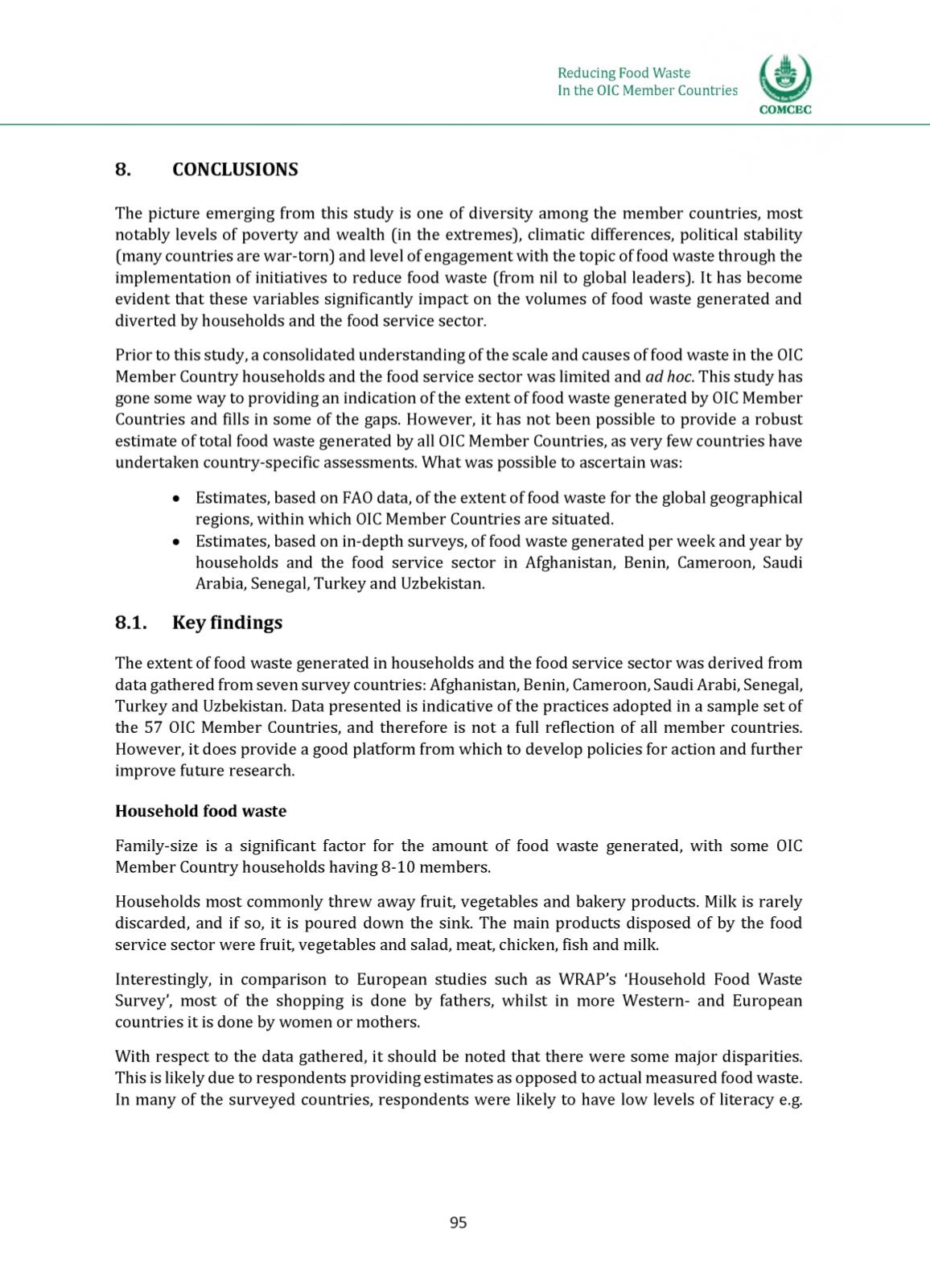

COMCEC
Reducing Food Waste
In the OIC Member Countries
8.
CONCLUSIONS
The picture emerging from this study is one of diversity among the member countries, most
notably levels of poverty and wealth (in the extremes), climatic differences, political stability
(many countries are war-torn) and level of engagement with the topic of food waste through the
implementation of initiatives to reduce food waste (from nil to global leaders). It has become
evident that these variables significantly impact on the volumes of food waste generated and
diverted by households and the food service sector.
Prior to this study, a consolidated understanding of the scale and causes of food waste in the OIC
Member Country households and the food service sector was limited and
ad hoc.
This study has
gone some way to providing an indication of the extent of food waste generated by OIC Member
Countries and fills in some of the gaps. However, it has not been possible to provide a robust
estimate of total food waste generated by all OIC Member Countries, as very few countries have
undertaken country-specific assessments. What was possible to ascertain was:
• Estimates, based on FAO data, of the extent of food waste for the global geographical
regions, within which OIC Member Countries are situated.
• Estimates, based on in-depth surveys, of food waste generated per week and year by
households and the food service sector in Afghanistan, Benin, Cameroon, Saudi
Arabia, Senegal, Turkey and Uzbekistan.
8.1. Key f in d in g s
The extent of food waste generated in households and the food service sector was derived from
data gathered from seven survey countries: Afghanistan, Benin, Cameroon, Saudi Arabi, Senegal,
Turkey and Uzbekistan. Data presented is indicative of the practices adopted in a sample set of
the 57 OIC Member Countries, and therefore is not a full reflection of all member countries.
However, it does provide a good platform from which to develop policies for action and further
improve future research.
Household food waste
Family-size is a significant factor for the amount of food waste generated, with some OIC
Member Country households having 8-10 members.
Households most commonly threw away fruit, vegetables and bakery products. Milk is rarely
discarded, and if so, it is poured down the sink. The main products disposed of by the food
service sector were fruit, vegetables and salad, meat, chicken, fish and milk.
Interestingly, in comparison to European studies such as WRAP’s ‘Household Food Waste
Survey’, most of the shopping is done by fathers, whilst in more Western- and European
countries it is done by women or mothers.
With respect to the data gathered, it should be noted that there were some major disparities.
This is likely due to respondents providing estimates as opposed to actual measured food waste.
In many of the surveyed countries, respondents were likely to have low levels of literacy e.g.
95
















